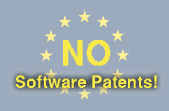Lector de Feeds
MGASA-2025-0272 - Updated strongswan packages fix security vulnerability
Publication date: 10 Nov 2025
Type: security
Affected Mageia releases : 9
CVE: CVE-2025-62291 Description Buffer Overflow When Handling EAP-MSCHAPv2 Failure Requests. (CVE-2025-62291) References
Type: security
Affected Mageia releases : 9
CVE: CVE-2025-62291 Description Buffer Overflow When Handling EAP-MSCHAPv2 Failure Requests. (CVE-2025-62291) References
- https://bugs.mageia.org/show_bug.cgi?id=34705
- https://lists.opensuse.org/archives/list/security-announce@lists.opensuse.org/message/QVE27CU4U3DGHAD4EVF75YM3RK423ZQS/
- https://www.strongswan.org/blog/2025/10/27/strongswan-vulnerability-(cve-2025-62291).html
- https://cve.mitre.org/cgi-bin/cvename.cgi?name=CVE-2025-62291
- strongswan-5.9.14-1.1.mga9
Categorías: Actualizaciones de Seguridad
MGAA-2025-0093 - Updated simgear, flightgear and flightgear-data packages fix bug
Publication date: 10 Nov 2025
Type: bugfix
Affected Mageia releases : 9
Description Simgear, flightgear and flightgear-data updated to bug fix release 2024.1.3 References
Type: bugfix
Affected Mageia releases : 9
Description Simgear, flightgear and flightgear-data updated to bug fix release 2024.1.3 References
- https://bugs.mageia.org/show_bug.cgi?id=34725
- https://www.flightgear.org/download/releases/2024-1-3/
- flightgear-2024.1.3-2.mga9
- simgear-2024.1.3-1.mga9
- flightgear-data-2024.1.3-1.mga9
Categorías: Actualizaciones de Seguridad




